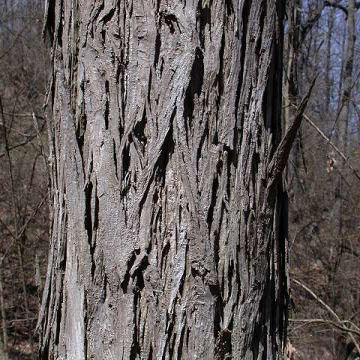

Carya ovata - (image 1 of 7)
Taxonomy
Family: Juglandaceae
Habitat
Upland woods and savannas. Disturbed woods and low woods at the edges of sedge meadows and wet prairies.
Associates
Quercus alba and Quercus coccinea. In more mesophytic woods found with Acer saccharum, Carya cordiformis, Fraxinus americana, Ostrya virginiana, Quercus rubra, Tilia americana, and Vitis riparia.
Distribution
Southern ME and southern Quebec west to southeast MN and western NE, south to GA and eastern TX.
Morphology
Deciduous tree to 25 m, rarely to 38 m. Bark gray, exfoliating is long plates (shaggy). Terminal buds more than 1.2 cm long; bud scales imbricate, gray. Leaves pinnate compound; leaflets 5, margins with persistent tufts of hair on one or both sides of the tooth, just below it's apex. Fruit with a thick husk, wider than long, solitary or in pairs; kernel sweet and tasty.
Notes
Flowers early May to early June.
Wetland indicator: Facultative Upland.
Behaves like a shrub in response to regular fires.
References
Farrar, J. L. 1995. Trees of the Northern United States and Canada.
Ames, Iowa: Iowa State University Press
Gleason, Henry A. and A. Cronquist. 1991. Manual of Vascular Plants of
Northeastern United States and Adjacent Canada. Second Ed.
The New York Botanical Garden. Bronx, NY
Hardin, J.W., D. J. Leopold, and F.M. White. 2000. Harlow and Harrar’s Textbook of Dendrology. Ninth Ed.
McGraw-Hill. New York.
Swink, F. and G. Wilhelm. 1994. Plants of the Chicago Region.
Indiana Academy of Science. The Morton Arboretum. Lisle, Illinois.
|
© Michael Hough 2004 |